Introduction
On September 18, 1981, Guatemala and its partner in archaeological research, The University Museum, suffered an indirect attack by armed looters. Carved jades exhibited at Tikal were stolen from the museum at the site. These jade objects had been excavated during the University Museum’s research program there from 1956 to 1970, and so are well recorded—they will be published as part of the Museum’s forthcoming Tikal Reports. But their theft is a theft from the people of Guatemala—indeed, from humanity in general—and is symptomatic of the looting that is ravaging the material remains of the ancient world. The Tikal objects were stolen because there is an increasingly profitable market in archaeological antiquities, a market which threatens to undermine future research and the dissemination of its findings to the public. Unless checked, archaeological plunder today may well destroy our ability to inform ourselves and future generations about the past.
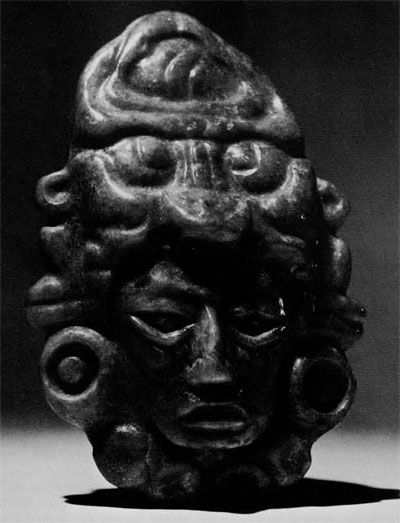
The University Museum has long been in the forefront of efforts to control the illicit removal of archaeological treasures from their country of origin. Its famous “Pennsylvania Declaration” of 1970 prohibited the acquisition of illegally exported archaeological materials. The Museum was also the first institution in this country to adopt a policy requiring proof that an archaeological object brought in for possible sale or examination was legally acquired before its staff would give any opinion on its authenticity. Members of its staff have been active sponsors of legislation in Washington designed to limit importation of illicitly excavated archaeological objects. Editorials have appeared in this magazine, informing readers about the seriousness of looting in archaeological sites throughout the world. Recently, the Museum adopted a policy stating that none of its objects will be lent to shows or institutions that do not support the UNESCO Convention on the Means of Prohibiting and Preventing the Illicit Import, Export and Transfer of Ownership of Cultural Property, 1970.
Unfortunately, neither these efforts nor those of other institutions have any perceptible effect on the looting of archaeological sites throughout the world; indeed, such plunder is more widespread now than at any time in the past.
We at The University Museum, along with the rest of the scholarly world, find this looting a major problem for a crucial and very practical reason. It is not moral indignation, although we express that most forcibly, for the Museum’s role as an institution is not to pass judgment on human behavior. Nor is it because legal codes are violated since, although we may be influential in framing new laws and changing old ones, it is not, obviously, the place of the Museum to enforce laws. Rather, our very strong concern is because the looting of archaeological remains destroys those sites without any record whatsoever, let alone any record of the context from which artifacts are wrenched. It is as if a few particularly attractive pages were ripped from the books of a library, and the remainder burnt. In a word, the context is destroyed without record, so that most of the information vital to the fullest study and reconstruction of the past is irremediably lost to the world.
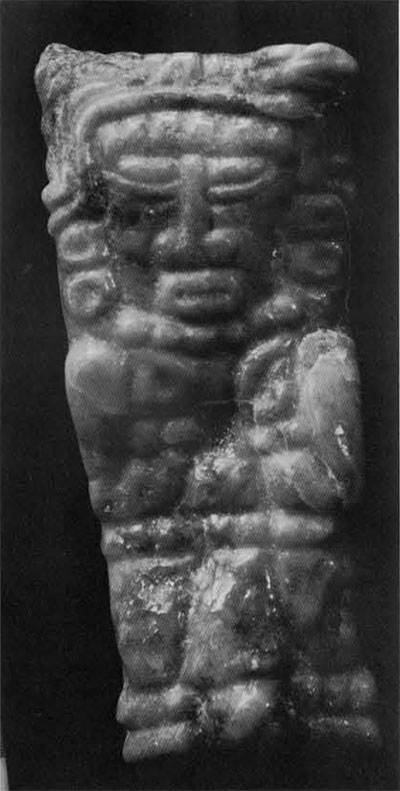
Most distressing is the fact that the pace of looting has increased in recent years, as reports reaching us indicate. These reports are now attracting the attention of popular presses in several countries. Here in the United States, national publications such as National Geographic and Archaeology Magazines, as well as The New York Times, recently featured stories on the problem of looting ancient Maya archaeological sites: looting of the past has become particularly acute in Central America, perhaps because mounting political instability in some countries has made local policing efforts increasingly difficult and ineffective. There the problem has reached staggering proportions. Various sources indicate that over 6,000 Classic Maya polychrome vessels have been clandestinely removed from Guatemala and Mexico since 1972. If this is true, thousands of burials have been destroyed in the process of obtaining these saleable objects; in consequence, the valuable information of context which can reveal aspects of ancient Maya life, has been irretrievably lost. The profit of a few has resulted in the permanent loss for all mankind of significant portions of the past.
What is being done about this erosion of the past? Why are legislative efforts of little effect, even counterproductive? Is there a practical solution to the problem? Or, as with natural resources such as oil, is it only a matter of time before all informative contexts of man’s ‘unnatural resources’ are gone forever?
Legal Considerations
At present, the great majority of people do not think that it is wrong to own archaeological objects purchased from art dealers. On the contrary, such ownership is often seen as protecting mankind’s cultural heritage. In many parts of the industrialized world, collecting archaeological art is regarded as signifying an educated taste, a sense of the past, an appreciation for the magnificent accomplishments of history, more enduring than military, economic or social feats of days gone by. Such positive values are held in high esteem. Legislation has done little to change that view, nor is it likely that it can effectively change it. Proposals now in Washington seeking to enact import controls on archaeological materials are being met with skepticism by many members of Congress who regard such measures as an infringement of rights; the majority of Congress does not see what is wrong with collecting. That buying archae ological art fosters destruction of the past is a fact not generally accepted by most collectors, even the most knowledgeable. Indeed, their dealers may not even understand this basic fact, and if they do, it is hardly in their interest to explain it to their clients.
The legislative efforts to control destructive archaeological activity—looting—can be divided into two broad categories: attempts within the countries of origin to curb illicit excavations and illegal export of `antiquities,’ and efforts to control the import of plundered archaeological artifacts into the main receiving countries.
While it is illegal to excavate archaeological sites in Mexico and Guatemala without government approval, the despoiling of pre-Hispanic sites continues apace. During recent congressional hearings on the adoption of the UNESCO Convention limiting the trade in archaeological antiquities, dealers have argued that it is the responsibility of the countries of origin to police their archaeological heritage. But the reality is that even in the best of times, no country can possibly police its national patrimony effectively: resources are too limited to stem the illegal exportation of their achaeological treasures which appear blatantly not only in private but even public collections in the United States, Europe and Japan.
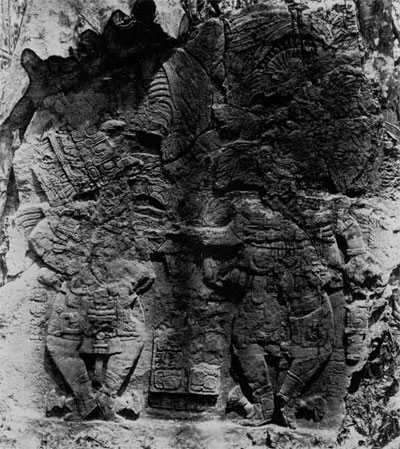
Nearly all countries ‘exporting’ pre-Hispanic art have had laws on the books for some time prohibiting unsanctioned excavation of archaeological sites as well as the export of any sort of ‘antiquities.’ The sites and the objects they contain are considered part of the national patrimony along with mineral deposits such as gold, silver and oil. Despite the sanctions against illegal excavations, the actual situation in Latin America is full of contradictions reflecting the basic rift between legal code and the behavior it is designed to control. While laws in Mexico and Guatemala are designed to curb looting, it is also legal to own a collection of pre-Hispanic art if it is registered with the government. Indeed, some of the finest collections of Maya art known are in the hands of Latin American private collectors. These objects were not acquired during the course of government approved archaeological excavations but rather during illegal pillaging of archaeological sites whose purpose is to sell finds to collectors with legally registered collections. The profit motive supplied by the existence of legal collections has been sufficient to render illicit plunder worth the risk of punishment. Unfortunately, none of these private Mexican and Guatemalan collections are documented archaeologically; all of their contextual data have been lost because the despoilers who removed artifacts from their original setting did not record where they found the objects, nor did they provide any information as to their strati-graphic contexts. Obviously, they are not trained to do so. More important, information about their sources is counterproductive to their business in two ways: first, it increases the risk of detection by the police, and second, in order to enhance value, pieces up for sale are ascribed to famous sites such as Copan or Tikal, when in fact they derive from elsewhere.
In the United States, Europe, and Japan, where prices for archaeological art are invariably much higher than they are in countries of origin, there are no laws to regulate or prohibit collecting `antiquities.’ Since 1972, a Treaty of Cooperation has been in effect between the United States and Mexico providing for the mutual return of illegally removed pre-Hispanic and Colonial art to the country of origin. While the treaty has decreased importation of large sculpture and murals as well as huge Colonial retablos (altar-pieces) from Mexico into the United States, Mexican dealers turned to Guatemalan collectors to market large objects plundered from Mexican sites. As the treaty reduced export of major monuments into North America, there has been an increase in importation of smaller and more easily smuggled pieces, particularly Maya polychrome pottery, the prices of which have inflated dramatically in the face of growing demand. Dealing in such objects has therefore become increasingly profitable all the way down the looting chain, from the art dealer who advises his clients on new purchases to various ‘runners,’ middlemen and local residents of remote areas where archaeological sites are located. Since the latter are usually poor, and may be offered a year’s income for one polychrome vessel, their temptation is not difficult to understand.
Attempts to control American collecting by legislation are currently meeting stiff opposition. The American Association of Dealers in Ancient, Oriental, and Primitive Art has retained skilful legal counsel to lobby effectively in Congress against the adoption of the UNESCO Convention of 1970 limiting trade in any antiquity deemed illegal by countries of origin. The art dealers argue that what is illegal abroad cannot, by that token, be considered illegal in the United States. They also, argue that adopting the UNESCO Convention into law could affect the millions of coin and stamp collectors in this country. More persuasive is their contention that it would set a dangerous precedent. If such law were enacted, what is to prevent any country hostile to the United States from declaring the collections of its citizens residing in this country illegal? Such considerations weigh heavily on the shoulders of a legislative body inevitably concerned about how its constituency regards its actions. The fact that the art dealers have been successful in preventing enactment of the UNESCO Convention has less to do with their skilful counsel than it does with the reality of public opinion which is sensitive to any governmental infringement of perceived ‘rights,’ while unaware of and therefore unconcerned about the deleterious consequences of archaeological depredation for the cultural heritage of all humanity.
Most active in seizing stolen antiquities has been the U.S. Customs Service. In 1979, five American smugglers of pre-Hispanic ‘antiquities’ from Mexico were convicted under the National Stolen Property Act. Known as the McClain Case, it is the first time that the antiquities law of a foreign country has been upheld in a U.S. court. Because Mexican law declares that all its pre-Hispanic artifacts are national property, removal from Mexico of such property constitutes theft, and it is the Mexican law that was upheld in a U.S. Federal Court. How far the Customs Service is willing to proceed on the basis of the McClain ruling is currently being tested by a Federal Court in Virginia: a recent shipment of Peruvian pre-Hispanic art, flown from Peru, was impounded at Dulles Airport by the Customs Service on the legal technicality of undervaluation. Since 1929 Peru has had a law which states that all its antiquities are the property of the state. It will be interesting to see whether the Customs Service can apply the McClain decision to this case as well.
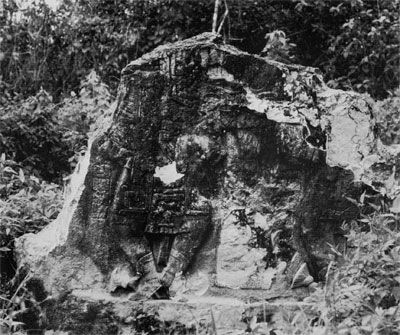
It has been argued that the Internal Revenue Service tax codes actually encourage archaeological plunder by allowing tax benefits to collectors who ultimately donate their collections of looted art to museums for substantial tax benefits. The system, it is said, encourages collecting for investment and so, indirectly but effectively, the destruction of archaeological sites. Here the complexity of tax laws becomes intertwined with equally complex issues of international relations, law and business.
In 1976, I was called to be an expert witness for the Treasury Department. The Customs Service had been alerted by the Internal Revenue Service that a bequest of pre-Hispanic mural art to a well known museum could not reduce the death taxes of the donor’s estate because the IRS contended that the collection was imported from Mexico “contrary to law” and, further, that the objects in question included forgeries and that the deduction, even if legal, was therefore worthless. As it turned out the murals in the collection were not imported “contrary to U.S. law” (my emphasis) and they were indeed genuine. These determinations opened a Pandora’s box of jurisdictional squabbles between the Customs Service, the Internal Revenue Service, and the State Department, as well as external ones involving the Mexican State Department and Mexico’s National Institute of Anthropology and History. Six years later the issue remains unresolved. The collector’s estate is still in probate and ownership of the collection continues to be a matter of international debate.
As a means of discouraging destruction of archaeological data, legal solutions are costly, slow, and ineffective. This is not to say that legislation should not be creatively designed to curb the erosion of man’s cultural heritage, but a change in people’s attitude is essential. History provides ample proof that laws not supported by accepted norms are largely unenforceable. Current laws aimed at controlling the importation of narcotics are a case in point. What motivates action is not law per se but rather what is deemed acceptable or unacceptable behavior by governments as well as the majority of their constituency.
Scholarly Considerations
For all archaeological material, the locational and stratigraphical context is vital to full understanding—this cannot be stressed too strongly. However, for all artifacts then is also at least some information to be gained from study of the objects themselves; this is particularly true of ‘art objects,’ with their rich imagery and iconography. Thus, the increasing quantity and quality of looted ‘antiquities’ presents a genuine dilemma to scholars, but especially to art historians. To what extent is archaeological context indispensible in the analysis of ancient art? Should this vast corpus of looted material be ignored because its archaeological context has been lost? Or, with the damage of looting irreparably done, should not efforts be directed at trying to salvage from these materials as mud information as possible? In my own field of pre-Hispanic art, these questions have inevitably greatly sharpened the division of scholars into two schools: the one which, ii any case, pays little or no heed to archaeological context and the other which uses context to explain how pre-Hispanic art functioned in its cultural matrix. The implications of these two different approaches to the study of pre-Hispanic art have ramifications far beyond regional considerations. They involve some serious ethical and methodological problems associated with an approach that cannot consider archaeological associations because they have beet lost in the looting process. In practice, the dichotomy is not so clear cut and the reality of current research in the pre-Hispanic field has been characterized by a tendency to us whatever data are available. In any study relying on the chance survival of material remains from the past, particularly one in which written texts coeval with the production of those remains are few and imperfectly understood, it is a necessity of research to use any and all kinds of data extant.
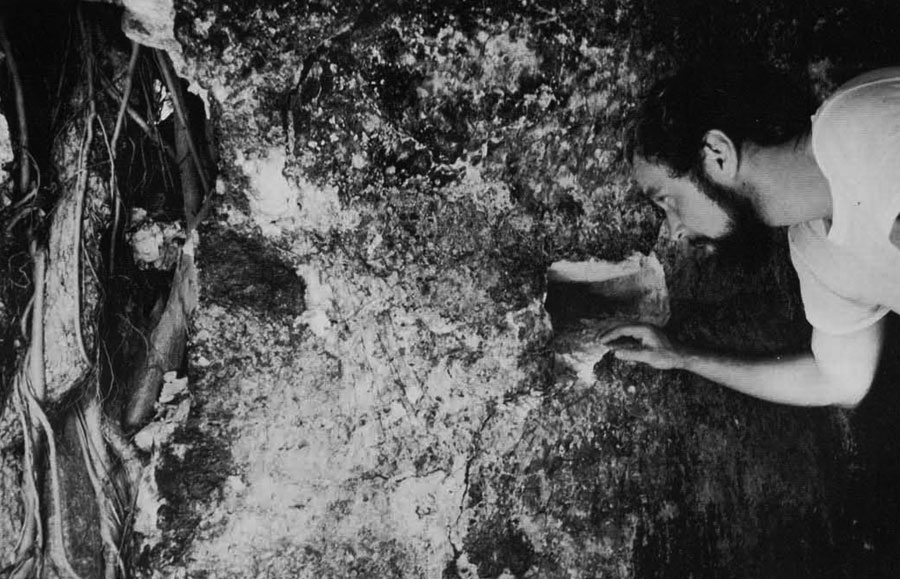
The first problem in considering undocumented collections from illicit excavations is not knowing for sure that one is dealing with the real thing. Forgeries in pre-Hispanic art have deceived some distinguished scholars. Overpainting eroded Maya polychrome vessels, and creating new designs to ‘improve’ the value of plain wares, are currently being done by a dealer who dupes not only government officials but also his clients. The well known Van Meegeren forgeries of an early period of Vermeer are perhaps the best-known examples of a forger who ‘fooled the experts.’ Forgers are a curious lot. While some are motivated by the market demand and the money it brings, most gifted fakers, as in the case of Van Meegeren, are driven to their craft of deception by a desire to confound the professional establishment. Specialists who assert that they can detect fakes are in most cases to be taken seriously, but even scholars with the best eyes will admit that they could be fooled. Whatever the motivation of forgers, the fact remains that they are at work in the production of archaeological art when there is enough interest to warrant the effort.
The second major problem for scholars who analyse looted archaeological materials in their research lies in the difficulty, often the impossibility, of validating conclusions derived from the study of such materials. As noted above, there are those who argue that context is unimportant. But let us consider an actual situation. The recent flood of Maya polychrome vessels into the United States and Europe has presented an intriguing body of data to those scholars interested in the iconography—the visual symbolic content—painted and molded onto ceramic forms. While some interesting contributions have been made by scholars using such material, there are no means to test conclusions independently, nor are there any data bases from which to offer alternative hypotheses from other lines of evidence such as could be suggested by archaeological associations. For this material there are no associations whatever. It is not even clear, for example, that a polychrome vessel in question came from Mexico or Guatemala, much less from any particular site, let alone exactly where in the site. Dating of such objects, a sine qua non for analysis of material culture, becomes pure guess work. These artifacts are ‘floating’ in both time and space. If the date of an object is not reasonably clear, possibilities of presenting convincing evidence as to why the object was made and for what purposes, much less what it may have meant to the Maya, become very limited indeed.
A positive approach to this problem is the Museum’s Maya Art Program, conceived in 1967 when William R. Coe, Director of the Tikal Project and Curator of the American Section of the University Museum, invited Yale art history professor George Kubler to undertake a study of Tikal art in its archaeological context. Several of Professor Kubler’s students joined the team analysing the extensive archaeological data collected by the Tikal Project in order to interpret properly the role of Tikal art in the development, florescence, and demise of that great Classic Maya center. Over the years, the project has been incorporated into the research component of the Maya Art Program. To be published as Tikal Report No. 36: The Art of Tikal in Archaeological Context, this long term study will be a major statement as to the effectiveness of the interdisciplinary approach for a more holistic study of Maya civilization. It will be the first time that a specifically art historical study has been commissioned by anthropological archaeologists, and Tikal Report No. 36 is conceived as an integral part of the Tikal series, not as a mere appendix.
The Maya Art Program maintains that loss of archaeological context reduces the opportunities of testing conclusions reached from examination of archaeological objects arbitrarily classified as ‘art.’ Any destruction of information associated with an object in context becomes a serious deficit for present and future analysis, interpretation, understanding, and deeper appreciation of material remains.
Of course, the archaeological associations of Tikal art are exhaustively documented and its analysis, therefore, can be checked against other ‘data sets’ carefully recorded from the site. Similarly, my own study of Maya mural painting on the east coast of Yucatan integrally incorporated its recorded archaeological context so that various kinds of evidence, such as ceramics and masonry techniques, could be compared and contrasted for the purpose of formulating a holistic understanding of that region’s pre-Hispanic past.
Unfortunately, future applications of the interdisciplinary approach outlined above are seriously threatened by the continuing destruction of Maya art’s archaeological associations. The depredation of Maya sites must cease if such productive research strategy is to find future material to study.
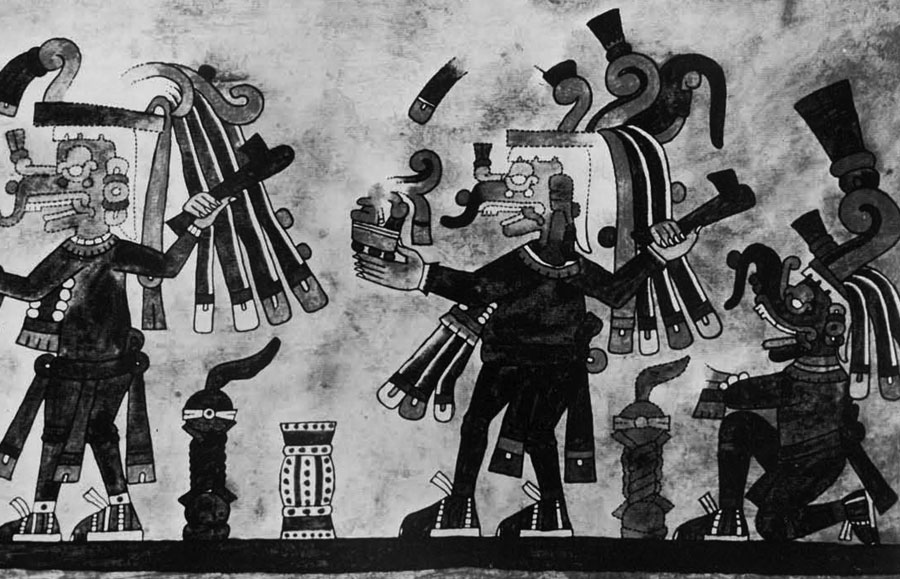
A Proposed Solution: Changing Norms of Behavior
The role of museums in forming public opinion and taste cannot be overestimated. There is little doubt that many private collectors of pre-Hispanic art, particularly Maya art, have been influenced by the recent acquisitions of this country’s art museums. Not only are these proudly displayed objects explicitly the stolen property of Mexico or Guatemala, they conspicuously lack any associative data so crucial to the kind of rigorous visual analysis carried out by the Maya Art Program. The acquisition and exhibition of these objects by seemingly respectable museums has given a mantle of respectability to the looting of archaeological sites and to the illegal trade in looted artifacts. To meet increasing demand, auction houses and dealerships have increased their inventory of pre-Hispanic art and thereby have stimulated this looting. It is not surprising, therefore, that private collecting of looted pre-Hispanic art has become so widespread, and so a major factor in the looting chain.
Changes in the tax laws to deny to donors of collected objects the current tax benefits would deter those solely interested in financial advantage. How do we address those, perhaps the majority, whose primary motivation is aesthetic and a passion for physical closeness to the ancient world? A desire to surround oneself with objects of great beauty and antiquity is in itself a far from unworthy passion. However, this passion not only has promoted explicitly illegal activity abroad but is also devastating to scholarship.
Most professional archaeologists who excavate and analyse the kind of materials of interest to collectors regard collecting as misguided and wrong. One result of this attitude has been to stifle potential dialogue between scholars and collectors, dialogue which might promote solutions to the looting problem. The resultant situation is one in which dealers in archaeological art have achieved exclusive access to the collecting public. Most collectors would be distressed to know that they are a major cause of archaeological looting, particularly if they realized that this looting progressively destroys any hope for reconstructing the past. It is obviously not in the interest of art dealers to inform their clients of such negative side effects of acquisition. It is incumbent upon professional archaeologists to do so. Their refusal to talk to collectors leaves the latter in contact only with the dealers. Most collectors are curious about the ancient significance of what they have acquired and seek a direct involvement with archaeology. Up to now the only avenue, other than reading archaeological reports and summaries, has been to own a part of the material past. Because collectors such as these are in the majority, they have been unwittingly responsible for creating a market for the smuggling of archaeological art. If this market were to dry up, if the majority of collectors were to voluntarily stop buying, looting would be stemmed or at least diminished, by the most efficient and least costly means possible, removal of the profit incentive.
Creative steps have been taken to involve the public, including individuals who collect archaeological art, in the exciting enterprise that is archaeology, from field research to analysis and publication of data. The University Museum has for years involved collectors in archaeology by encouraging people to volunteer their valuable services in the costly and lengthy analysis and publication of the results of its professionally conducted archaeological research programs through the world. Earthwatch, an organization based in Massachusetts, provides an opportunity for persons interested in archaeology to participate in professionally conducted field work, including some University Museum projects, and in the financing of that costly activity. Several collectors of archaeological art who have participated in Earth-watch activities have given up collecting as a result of their participation, for their experience has convinced them that their interest in archaeology’s mission to reconstruct the past is incompatible with an activity which literally undermines that past. They have substituted direct participation in archaeology for collecting.
Recently, the public education component of The Maya Art Program has mounted a campaign, funded by the Tinker Foundation and the National Endowment for the Arts, designed to transform from destructive to constructive ends the intense interest in the archaeological past represented by the majority of collectors and interested public. The first step in this campaign has been public lecture series as well as tours to archaeological sites in Mexico and Central America. The main purpose is, first, to make the public aware that any possibility of understanding the past is irrevocably destroyed by looting and that collectors play a crucial role in the looting process. If the owner of an archaeological artifact is accused by his peers of destroying something valuable and irreplaceable as was the wearer of a jaguar coat during the campaign to end the slaughter of endangered species, mounting public opinion may result in a decline of looting. Archaeology must be presented as the valuable historical resource it is.
Second, the campaign seeks to change a zeal for owning with a zeal for knowing. This we attempt to promote by communicating an enthusiasm for research currently being carried out in this Museum, and by emphasizing in Museum exhibits the value of studying ancient art in archaeological context. The campaign plans to sponsor a major traveling exhibition of the art of Tikal in archaeological context, scheduled for the Fall of 1984. This exhibition will demonstrate to a vast public throughout the United States and Canada the crucial role of archaeological context in the study of pre-Hispanic art.
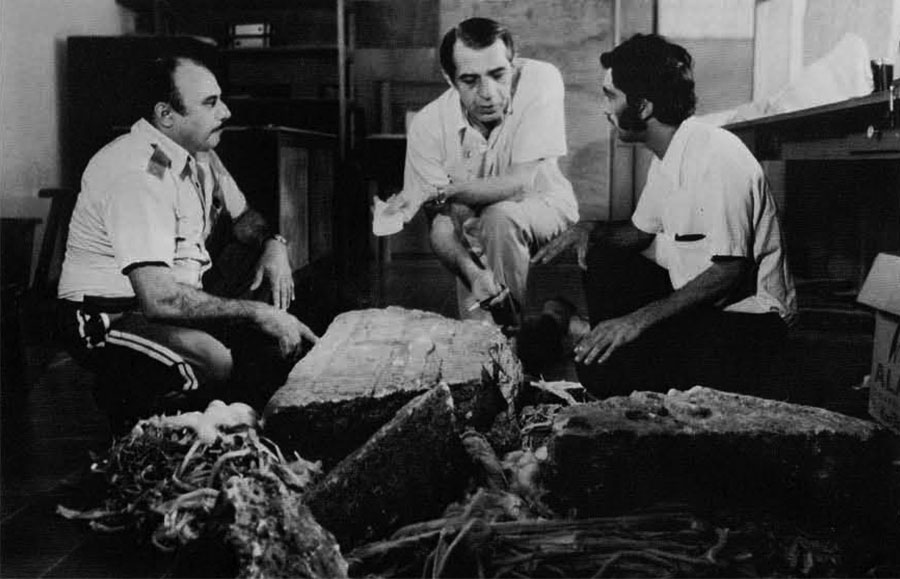
Still another means to involve collectors and the general public in the enterprise of archaeological research and at the same time obviate the role of the dealer who gets his wares from looters, is to offer loans of properly excavated objects in return for financial contributions to research. After excavation, analysis, and publication, a donor who contributed to these activities could be offered objects on loan with the proviso that the objects be available to scholars to study. This proposal involves many problems, particularly in countries currently prohibiting any sharing of archaeological materials. Mexico, for example, prohibits even the loan export of professionally excavated material. But laws can be changed. If such loans were shown to provide financing for research and publication and at the same time to reduce looting, then changes might be possible for the benefit of all concerned. Alternatively, instead of objects lent from the ‘host’ country where the excavation took place, contributors could receive objects lent from the research institutions, such as our own Museum. Indemnification of loaned objects, in either case, could be designed in cooperation with insurance companies recruited to support archaeological research.
That public opinion can support scientific archaeological excavation and its intellectual aims is clear from many countries. In Britain, for example, there is a great deal of interaction between archaeologists and the general public through a variety of means: membership in national and local societies; museum and school programs; the widespread use of ‘volunteers’ on excavations; radio and television programs; and, perhaps most important, a long and strong tradition of responsible popular archaeological writing in newspapers, magazines and books. This general public support is reflected in the wide disapproval of looting. This public opinion, in Britain and other countries, has been directed against the destruction of sites and the looting of ‘antiquities’ within those various countries, rather than in other parts of the world. But it does demonstrate that the public can support responsible archaeology and oppose irresponsible destruction and looting; in all likelihood, it would also support programs and laws designed to reduce [perhaps even eventually eliminate] the looting of ‘antiquities’ in all parts of the world.
Conclusion/Epilogue
It is to public opinion in the wealthier countries of the world that we must address ourselves most urgently, for it is the collectors in those countries who support the illegal looting of artifacts in many parts of the world, through the chain of dealers in ancient arts, smugglers, middlemen, to the looters themselves. It is time that effective steps be taken to diminish and eventually halt this trade. Research institutions—such as ours—must take a leading role in this effort by developing creative methods to divert interest in the past from the acquisitive and destructive to the positive and inquiring. Access to the past must be shown to be realized best not by owning the ancient instrument, but by partaking in the discoveries of its past melodies.
